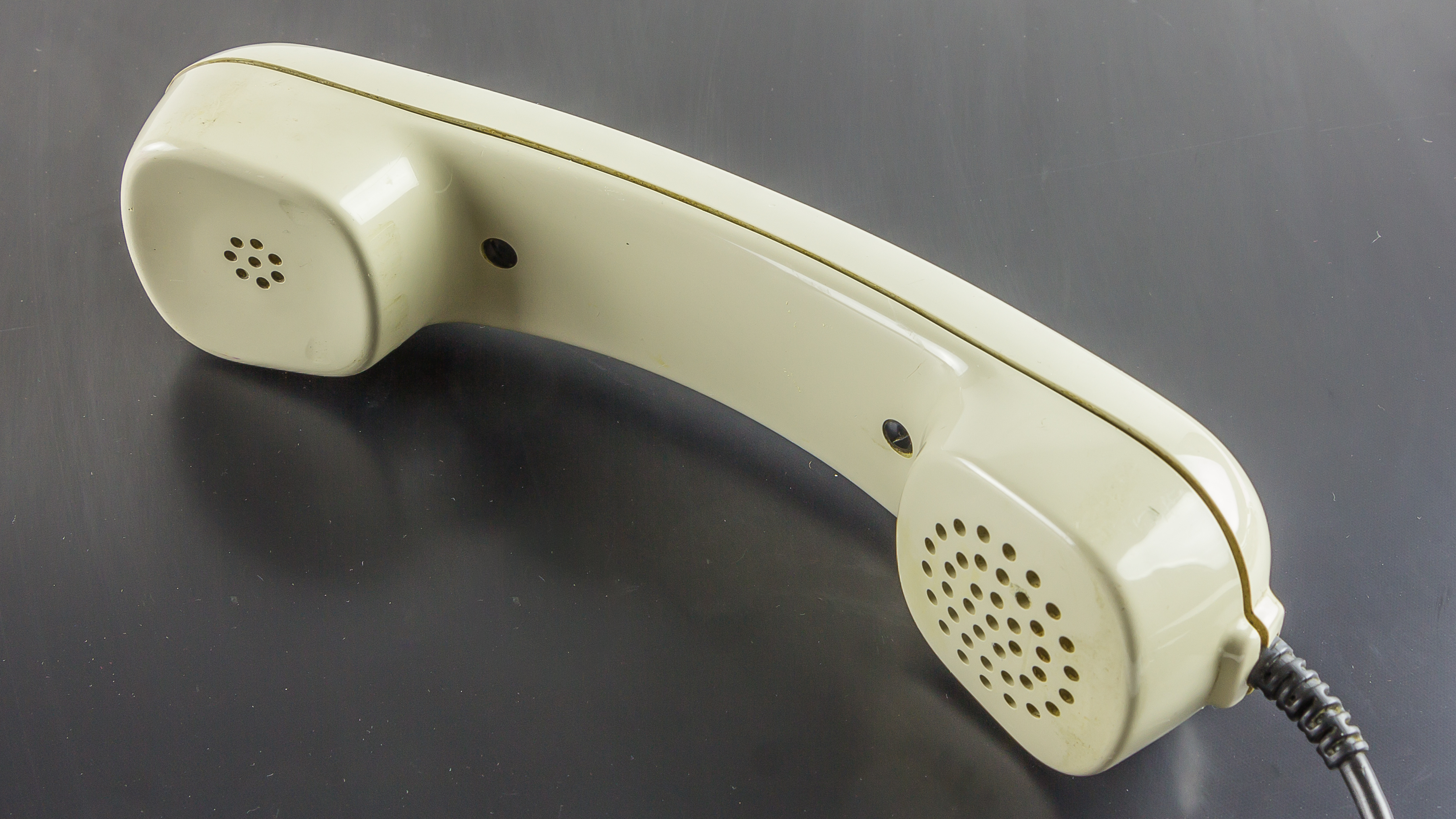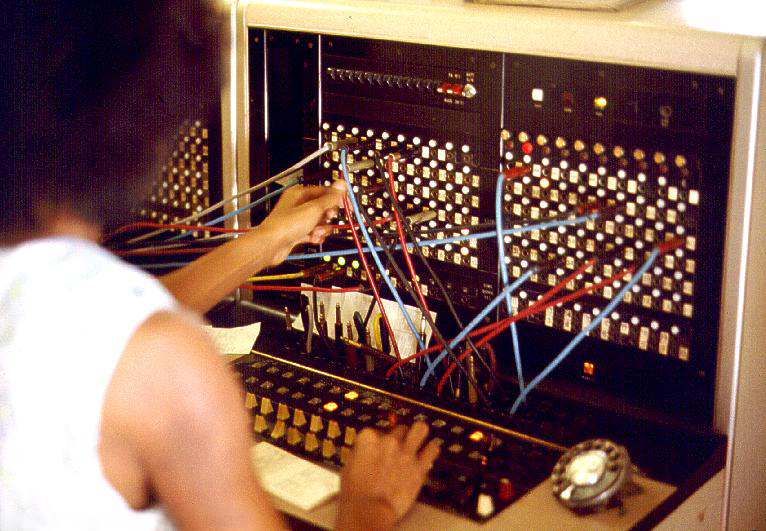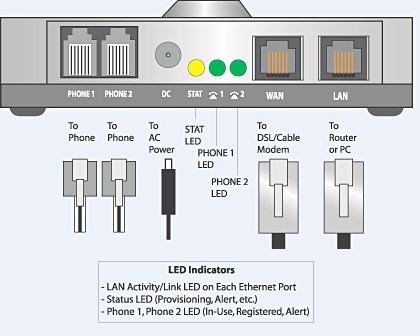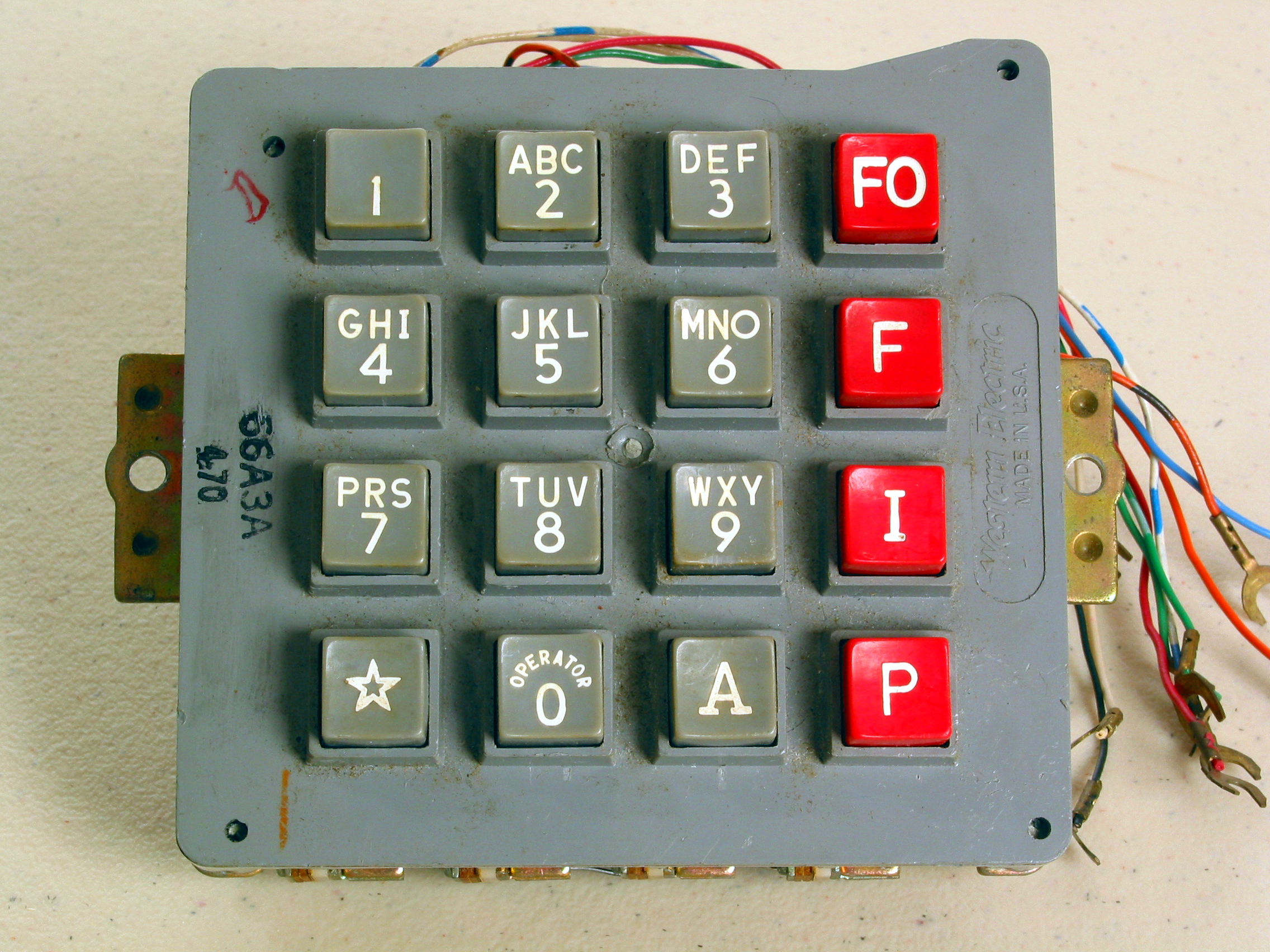|
Hook Flash
On analog telephone lines with special services, a flash or register-recall signal is used to control functions on the public telephone exchange, PBX or VoIP ATA. The term "register-recall" in Europe refers to sending a discrete signal to alert the "register" — the logical system controlling a telephone exchange, that it should accept commands from the end user in the middle of a call. The register was normally disconnected from the circuit once a call was setup. In contemporary telephone systems, the functions of the register are carried out by software and computer hardware, but in previous generations of electromechanical exchanges, using technology such crossbar or Reed relay, the register was often a system of analog electronics or even relay logic. The term "Flash" or "Hook Flash" is commonly used in North America, while in Europe a similar signal is referred to as a register-recall or more commonly "Recall" or simply the "R" button. These signals perform similar functio ... [...More Info...] [...Related Items...] OR: [Wikipedia] [Google] [Baidu] |
Telephone Exchange
A telephone exchange, telephone switch, or central office is a telecommunications system used in the public switched telephone network (PSTN) or in large enterprises. It interconnects telephone subscriber lines or virtual circuits of digital systems to establish telephone calls between subscribers. In historical perspective, telecommunication terms have been used with different semantics over time. The term ''telephone exchange'' is often used synonymously with ''central office'', a Bell System term. Often, a ''central office'' is defined as a building used to house the inside plant equipment of potentially several telephone exchanges, each serving a certain geographical area. Such an area has also been referred to as the exchange or exchange area. In North America, a central office location may also be identified as a ''wire center'', designating a facility to which a telephone is connected and obtains dial tone. For business and billing purposes, telecommunication carriers defi ... [...More Info...] [...Related Items...] OR: [Wikipedia] [Google] [Baidu] |
Handset
A handset is a component of a telephone that a user holds to the ear and mouth to receive audio through the receiver and speak to the remote party using the built-in transmitter. In earlier telephones, the transmitter was mounted directly on the telephone itself, which was attached to a wall at a convenient height or placed on a desk or table. Until the advent of the cordless telephone, the handset was usually wired to the base unit, typically by a flexible tinsel wire. The handset of a cordless telephone contains a radio transceiver which relays communication via a base station that is wired to the telephone line. A mobile phone does not require a base station and communicates directly with a cell site in designated frequency bands. Handset symbol A graphic symbol that designates a handset is used on cordless and mobile phones to specify placing or ending a telephone call. Usually a button with green upright (off-hook) handset icon is used for starting a call, and a r ... [...More Info...] [...Related Items...] OR: [Wikipedia] [Google] [Baidu] |
Indicator Lamp
A check engine light or malfunction indicator lamp (MIL), is a tell-tale that a computerized engine-management system uses to indicate a malfunction. Found on the instrument panel of most automobiles, it usually bears the legend , , , , , or a pictogram of an engine—and when illuminated, it is typically an amber or red color. The light generally has two stages: steady (indicating a minor fault) and flashing (indicating a severe fault). When the MIL is lit, the engine control unit stores a fault code related to the malfunction, which can be retrieved—although in many models this requires the use of a scan tool. This warning light can indicate almost anything from a loose gas cap to a serious knock in the engine. In the United States, specific functions are required of the MIL by EPA regulations. History Some older vehicles had a single indicator labeled "trouble" or "engine"; this was not an MIL, but an "idiot light" meant to indicate serious trouble with the engine (l ... [...More Info...] [...Related Items...] OR: [Wikipedia] [Google] [Baidu] |
Called Party
The called party (in some contexts called the "B-Number") is a person who (or device that) answers a telephone call. The person who (or device that) initiates a telephone call is the calling party. In some situations, the called party may number more than one. Such an instance is known as a conference call. In some systems, only one called party is contacted at each event. To initiate a conference call the calling party contacts the first called party, then this person contacts the second called party, but audio is transferred to both called parties. In a collect call (i.e. reverse charge), the called party pays the fee for the call, when it is usually the calling party that does so. The called party also pays if the number dialed is a toll-free telephone number. In some countries such as Canada, the United States and China, users of mobile phone A mobile phone, cellular phone, cell phone, cellphone, handphone, hand phone or pocket phone, sometimes shortened to simply mobil ... [...More Info...] [...Related Items...] OR: [Wikipedia] [Google] [Baidu] |
Calling Party
The calling party (in some contexts called the "A-Number") is a person who (or device that) initiates a telephone call. The person who, or device that, receives a telephone call is the called party (or callee or B-party). In some countries, it is common etiquette for a call originator to identify himself first instead of the receiver, when the connection is established. Modems and fax machine Fax (short for facsimile), sometimes called telecopying or telefax (the latter short for telefacsimile), is the telephonic transmission of scanned printed material (both text and images), normally to a telephone number connected to a printer o ...s use different tones when originating or answering a connection, which may be a source of problems for the user. Telephony Teletraffic {{telephony-stub ... [...More Info...] [...Related Items...] OR: [Wikipedia] [Google] [Baidu] |
Telephone Switchboard
A telephone switchboard was a device used to connect circuits of telephones to establish telephone calls between users or other switchboards, throughout the 20th century. The switchboard was an essential component of a manual telephone exchange, and was operated by switchboard operators who used electrical cords or switches to establish the connections. The electromechanical automatic telephone exchange, invented by Almon Strowger in 1888, gradually replaced manual switchboards in central telephone exchanges around the world. In 1919, the Bell System in Canada also adopted automatic switching as its future technology, after years of reliance on manual systems. Nevertheless, many manual branch exchanges remained operational into the second half of the 20th century in many enterprises. Later electronic devices and computer technology gave the operator access to an abundance of features. A private branch exchange (PBX) in a business usually has an attendant console, or an auto-atten ... [...More Info...] [...Related Items...] OR: [Wikipedia] [Google] [Baidu] |
Cord Circuit
In telecommunication, a cord circuit is a switchboard circuit in which a plug-terminated cord is used to establish connections manually between user lines or between trunks and user lines. A number of cord circuits are furnished as part of the switchboard position equipment. The cords may be referred to as front cord and rear cord or trunk cord and station cord. In modern cordless switchboards, the cord-circuit function is switch operated and may be programmable. In early and middle 20th century telephone exchanges this task was done by a supervisory relay set known variously as junctor circuit or district junctor. Later designs made it a function of the trunk circuit or absorbed it into software. See also *Switched loop In telephony, a Switched loop is a circuit that automatically releases a connection from an attendant console or switchboard, once the connection has been made to the appropriate terminal. Loop buttons or jacks are used to answer incoming li ... Refere ... [...More Info...] [...Related Items...] OR: [Wikipedia] [Google] [Baidu] |
Switchhook
A telephone hook or switchhook is an electrical switch which indicates when the phone is hung up, often with a lever or magnetic button inside the cradle or base where a telephone handset resides. It takes its name from old wooden wall telephones and candlestick telephones, where the mouthpiece was mounted on the telephone box and, due to sidetone considerations, the receiver was separate, on a cable. When the telephone was not in use, the receiver was hung on a spring-loaded hook; its weight would cause the hook to swing down and open an electrical contact, disconnecting something, but not the telephone from the line or the phone could not ring. When the handset is on the cradle, the telephone is said to be "on-hook", or ready for a call. When the handset is off the cradle, the telephone is said to be "off-hook", or unable to receive any (further) calls. Pushing the switchhook quickly is termed a "hook flash". Purpose Telephone switchhook separates calling and transmitting ... [...More Info...] [...Related Items...] OR: [Wikipedia] [Google] [Baidu] |
Analog Telephone Adapter
An analog telephone adapter (ATA) is a device for connecting traditional analog telephones, fax machines, and similar customer-premises devices to a digital telephone system or a voice over IP telephony network. An ATA is often built into a small enclosure with an internal or external power adapter, an Ethernet port, one or more foreign exchange station (FXS) telephone ports. Such devices may also have a foreign exchange office (FXO) interface for providing alternative access to traditional landline telephone service. The ATA provides dial tone, Ringing Generator, DC power, caller ID data and other standard telephone line signaling (known collectively as BORSCHT) to the telephone connected to a modular jack. The digital interface of the ATA typically consists of an Ethernet port to connect to an Internet Protocol (IP) network, but may also be a USB port for connecting the device to a personal computer. Using such an ATA, it is possible to connect a conventional telephone to ... [...More Info...] [...Related Items...] OR: [Wikipedia] [Google] [Baidu] |
Centrex
Centrex is a portmanteau of central exchange, a kind of telephone exchange. It provides functions similar to a PBX, but is provisioned with equipment owned by, and located at, the telephone company premises. Centrex service was first installed in the early 1960s in New York's financial district by New York Telephone. As of 2003, it was estimated that there were 20 million Centrex lines installed worldwide by 20 telephone companies, with the most installations in the United States (15 million), Canada (2 million), and the United Kingdom (1 million). This accounted for approximately 5% of all installed business telephone lines, worldwide. In terms of user-visible features, Centrex and PBX are similar. Features include: * Direct inward dialing (DID) * Automatic routing of calls to obtain lowest cost * Call pick-up groups * Call forwarding * Conference calling * Automatic call distribution (ACD) * Call detail recording In computer science, a record (also called a structure, ... [...More Info...] [...Related Items...] OR: [Wikipedia] [Google] [Baidu] |
Dual-tone Multi-frequency Signaling
Dual-tone multi-frequency signaling (DTMF) is a telecommunication signaling system using the voice-frequency band over telephone lines between telephone equipment and other communications devices and switching centers. DTMF was first developed in the Bell System in the United States, and became known under the trademark Touch-Tone for use in push-button telephones supplied to telephone customers, starting in 1963. DTMF is standardized as ITU-T Recommendation Q.23. It is also known in the UK as ''MF4''. The Touch-Tone system using a telephone keypad gradually replaced the use of rotary dial and has become the industry standard for landline and mobile service. Other multi-frequency systems are used for internal signaling within the telephone network. Multifrequency signaling Before the development of DTMF, telephone numbers were dialed by users with a loop-disconnect (LD) signaling, more commonly known as pulse dialing (dial pulse, DP) in the United States. It functions by int ... [...More Info...] [...Related Items...] OR: [Wikipedia] [Google] [Baidu] |
Off-hook
In telephony, on-hook and off-hook are two states of a communication circuit. On subscriber telephones the states are produced by placing the handset onto or off the hookswitch. Placing the circuit into the off-hook state is also called ''seizing the line''. ''Off-hook'' originally referred to the condition that prevailed when telephones had a separate earpiece (''receiver''), which hung from its switchhook until the user initiated a telephone call by removing it. When off hook the weight of the receiver no longer depresses the spring-loaded switchhook, thereby connecting the instrument to the telephone line. Off-hook The term off-hook has the following meanings: * The condition that exists when a telephone or other user instrument is in use, i.e., during dialing or communicating. * A general description of one of two possible signaling states at an interface between telecommunications systems, such as tone or no tone and ground connection versus battery connection. Note that if ... [...More Info...] [...Related Items...] OR: [Wikipedia] [Google] [Baidu] |

.jpg)




